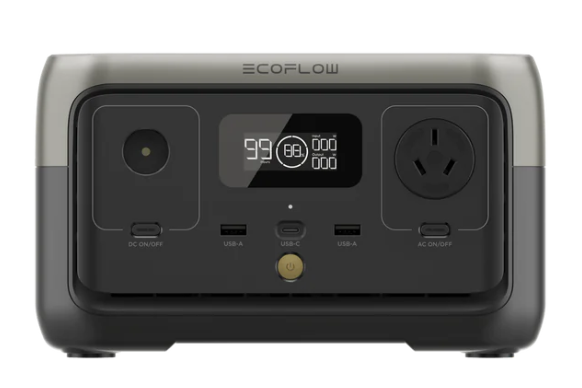Search
[{{{type}}}] {{{reason}}}
{{/data.error.root_cause}}{{{_source.title}}} {{#_source.showPrice}} {{{_source.displayPrice}}} {{/_source.showPrice}}
{{#_source.showLink}} {{/_source.showLink}} {{#_source.showDate}}{{{_source.displayDate}}}
{{/_source.showDate}}{{{_source.description}}}
{{#_source.additionalInfo}}{{#_source.additionalFields}} {{#title}} {{{label}}}: {{{title}}} {{/title}} {{/_source.additionalFields}}
{{/_source.additionalInfo}}What Size Portable Power Station Suits Your Needs?
What Size Portable Power Station Suits Your Needs?
Determine Your Power NeedsUnderstanding what you'll use your power station for is crucial. It's important to know which devices you plan to power, as this will significantly influence the capacity you should go for. Once you comprehend your power needs, making the right choice becomes much easier.
List the Devices You'll PowerTo start, make a comprehensive list of all the electronic devices you intend to power with the station. For campers, this might include small appliances like a mini-fridge, camping lights, or a smartphone. For emergency home use, consider essential items such as medical equipment, laptops, or Wi-Fi routers. In the case of road trips and RV users, expect to power larger devices such as microwaves and televisions. Listing these devices helps determine the wattage they require. Each device will have specific power requirements listed in watts (W) or volts (V) and amps (A). Multiply volts by amps to get the wattage. With this list, you can assess the energy needs of all devices, providing a foundation to estimate your total power consumption accurately.
Estimate Power Consumption and DurationAfter listing your devices, estimate how much power each will consume over time. Consider not just the power rating but also how long each device will run. For example, a 60W laptop running for five hours will consume 300Wh (watt-hours). Add the estimated consumption for each device to get your total daily power usage. This information is critical for selecting a power station with the appropriate capacity. Additionally, remember to factor in some buffer for unforeseen situations or additional devices. Having more power than needed can be a justifiable safeguard, ensuring you're never caught short in critical situations.
Match Power Station Size to Your Use CaseChoosing a power station that matches your specific use case improves efficiency and satisfaction. Different scenarios require different power capacities and features. Let's delve into various common use cases and their power station needs.
For Camping and Outdoor UseOutdoor enthusiasts often require a power station to charge several small devices. For camping scenarios, options with reasonable capacity are ideal. Typically, a power station with a capacity of around 100-300Wh suffices. These units can recharge phones, power small fans, or illuminate an LED light for several hours. Consider little power stations , known for their portability and efficiency in outdoor settings. Their lightweight compact designs make them easy to carry and store, ensuring camping trips remain unburdened by heavy tech equipment.
For Home Backup and Emergency UseIn emergencies, reliability is paramount. A larger capacity power station ensures critical home devices remain functional. A station providing 500-1000Wh can support essentials like fridges, medical devices, and lights for several hours. Mid to high-range models are popular choices for this purpose. Apart from capacity, consider features like multiple output ports and pure sine wave inverters which ensure safe operation for sensitive electronics and home appliances during unexpected outages.
For Road Trips, RVs, and WorksitesPower stations for RVs, road trips, and worksites need to offer enough capacity for high-demand devices. You might find yourself powering kitchen appliances, power tools, or entertainment systems. A capacity of 1000Wh or more usually suffices, ensuring long-lasting power. Options like the EcoFlow DELTA offering robust power output suited for heavy-duty applications. These units come with multiple AC outlets, efficient battery management systems, and are designed to withstand travel wear, ensuring dependable energy access wherever your tasks or travels may take you.
Top Portable Power Stations by CapacityWhen choosing a power station, considering its capacity is crucial. Let's explore reliable options that come highly recommended for their capacity and efficiency.
Small Capacity Picks: EcoFlow River 2 SeriesFor users needing compact and efficient solutions, the EcoFlow River 2 series stands out. These units are ideal for users with moderate power needs, such as outdoor enthusiasts and campers. The series offers a capacity ranging from 256Wh to 720Wh, balancing portability with performance. They include fast charging capabilities and versatile port options, allowing you to power multiple small devices simultaneously. Additionally, their lightweight design ensures easy transportation and set up, making them a go-to choice for short trips and light power demands.
Large Capacity Picks: EcoFlow DELTA SeriesWhen high power capacity becomes necessary, the EcoFlow DELTA series provides excellent solutions. With capacities up to 1260Wh, these power stations can handle more demanding tasks like home backups or supporting multiple large devices on the road. They feature fast recharge times and multiple AC outputs, ensuring you're always ready to keep your essential devices running. Their robust build quality and advanced battery management systems make them reliable during stressful situations, proving to be a worthy investment for users who face frequent energy dilemmas or require substantial off-grid power.
Extra Tips for Making the Right ChoiceSelecting the right power station involves weighing several considerations beyond mere capacity. Here are key factors to consider.
Portability vs. Performance Trade-OffWhen choosing a power station, consider the trade-off between portability and performance. While larger models provide more power, they also increase in weight and size, potentially limiting ease of transportation. Assess whether your priority is a lightweight, easily carried model for short outdoor stints, or a more powerful unit suitable for stationary use at home or in an RV. Decide based on your primary use, acknowledging that portability often sacrifices some performance features, whereas more powerful options may not be as easy to tote around.
Solar Charging and Expansion OptionsConsider whether the power station supports solar charging. This option extends usability during extended periods away from traditional power sources. Ensure the station is compatible with solar panels, and check for expansion ports that allow chaining additional batteries for increased capacity. These features can provide flexibility and reliability, especially for long durations outdoors or during extended power failures. Investing in a station with solar compatibility and expansion options can maximize your independence and adaptability in varying conditions.
ConclusionChoosing the right portable power station hinges on understanding your power needs, and aligning them with the correct capacity and features. By considering your specific requirements and use cases, you'll find a suitable power solution that efficiently supports your lifestyle. Whether for outdoor adventures, securing your home during an outage, or powering long road journeys, there is a power station tailored for you. Make an informed choice and ensure you have a reliable energy source whenever and wherever you need it.
When you subscribe to the blog, we will send you an e-mail when there are new updates on the site so you wouldn't miss them.








Comments